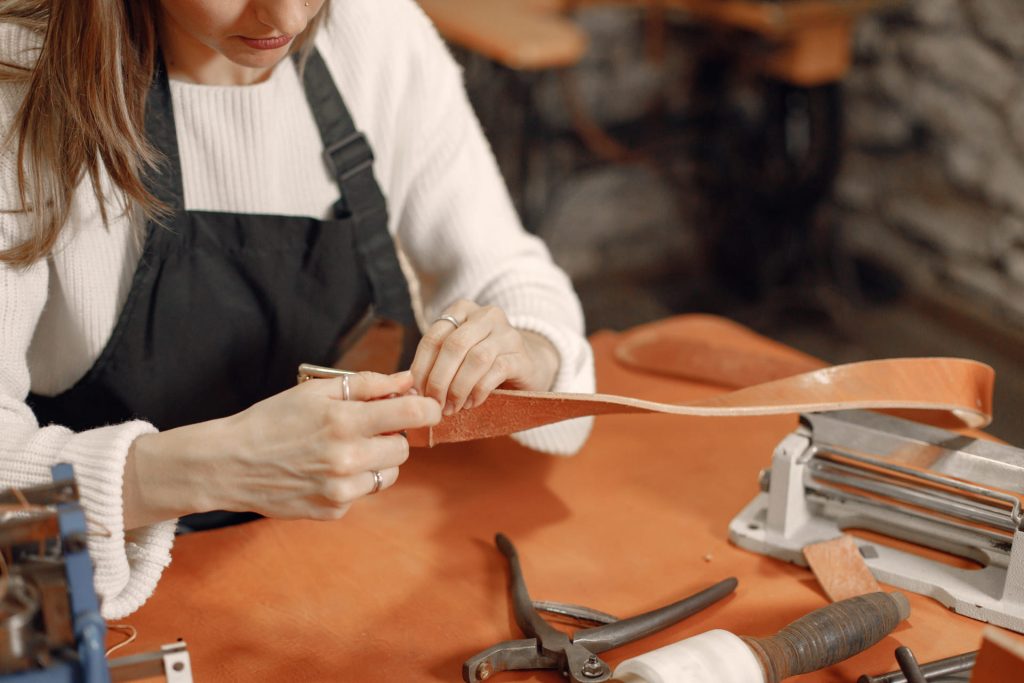
A quality leather knife can make cutting and shaping leather products a joy. Choosing the right knife is critical.
A quality leather knife can make cutting and shaping leather products a joy. Choosing the right knife is critical.
A leather knife is an essential tool for cutting and finishing leather. The most popular types include the round knife (head knife), ski knife, swivel knife, cobbler’s knife, welt knife, paring knife, and channel knife. Each is available in a variety of sizes, and sharpness is critical in all cases.
Which one should you choose? Let’s explore leather knives and what to consider when choosing a knife for your shop or a specific project.
Understanding Leather Crafting Needs
A leather cutting knife FST is a cutting tool used to mark, trim, and cut leather. It is an essential tool for leatherworking. There are many types of leather cutting knives, all of which have different uses. Sometimes, the only tool you may need for a leatherworking project is a knife.
Knives come in a variety of shapes, sizes, and uses. Steel is the most common material used to make knives, but blade quality can vary greatly among the knives available.
Types of Leather Knives
Most basic knives (like utility and craft knives) can do a lot of the work. As your leatherworking skills develop, you’ll get a better idea of which specialized knife leather are best for your type of leatherwork and develop a preference for which types/styles you like best.
Utility knives
Utility knives are also great for leatherworking. Some have replaceable blades, and others have multiple blades. When one gets dull, simply snap it off, and a new, sharp blade is available.
Skiving Knives
A Skiving knife removes leather to make it thinner. This can be useful when you need to remove part of the leather but not cut through it completely. For example, when making a leather belt, you may need to remove some material from the area where the buckle is attached so that the leather is not too thick and bulky in the finished product.
Clicker knives
Clicker knives are simple utility tools commonly used in the shoe trade. Their all-metal construction allows you to sharpen the blade continuously and use it to its full length.
Paring Knives
These knives do not have a handle, so some users conveniently wrap the metal with leather. The knives may need sharpening before use.
Key Features to Consider
Types of Steel Used in Leatherworking Knives. The steel used in leatherworking knives can vary; some common types include carbon steel, stainless steel, and high-carbon stainless steel. Each type of steel has advantages and disadvantages, so choosing the right type for your specific leatherworking needs is essential.
The Importance of Blade Sharpness. Sharp blades are essential for precise, clean cuts in leatherworking. Dull blades can cause the leather to fray, resulting in rough edges and a less professional-looking end product.
Choosing the Right Knife for Your Craft
Choosing the perfect carving knife requires carefully considering the type of wood you are working with and your artistic style. Different types of wood have different densities, grain patterns, and textures that can affect how each carving knife interacts with the material. Likewise, your artistic style will determine the types of cuts and details you want to achieve.
For Cutting and Shaping
The first step in choosing the right knife is to understand the requirements of your project clearly. Different types of clay and projects require different tools to achieve optimal results. For example, cutting soft, pliable clay requires a different approach than working with harder, skin-like clay. Consider the level of detail required for your work, the size of your projects, and how often you’ll use the knife. These considerations will help narrow down your options.
Conclusion
Choosing the right leather cutting knives for your project is an important step that can make a big difference in the outcome of your work. By considering factors like the type of leather or wood, the complexity of the project, and your skill level, you can choose the perfect knife to bring your vision to life.

